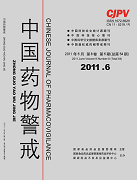|
|
Experimental Study on Chronic Toxicity of Radix Rehmanniae in Rats by Oral Administration
MA Zhi-hui, ZHANG Jing, ZHU Tao-tao, ZHOU Kun
2011, 8(6):
330-332.
Objective To observe the sub-chronic toxicity of Radix Rehmanniae, and evaluate the safety of Radix Rehmanniae as health food for long-term use. Methods Rats were continuously fed with Radix Rehmanniae 60 days, after 60 days, dissecting and having the liver, heart, spleen, kidney, brain, thymus, adrenal, genital, and calculating coefficient of organs; blooding from abdominal aortic for hematologic examination and blood biochemical detection, at the same, detecting HDL-C and LDL-C in serum. Results Radix Rehmanniae high(4.05g/kg), middle(2.70g/kg), low(1.35g/kg)3 dose groups compared with control group, weight between groups had no significant difference(P>0.05 ); liver coefficients of three dose groups had increasing trend, the high-dose group compared with the control group, the difference was significant(P<0.01); 3 dose groups of WBC were lower than the control group, and the low-dose and middle-dose had significant difference , the low dose group(P<0.001), middle dose group(P<0.05). PLT was higher, but only low-dose group had significant difference(P<0.05). Three doses of biochemical indexes in TC, HDL-C, LDL-C, compared with control group, were significantly higher and significant. AST was lower than the control group, and the high-dose group was significant(P<0.01). Conclusion Long-term using Radix Rehmanniae has some influence on cholesterol metabolism in rats, and can increase the amount of cholesterol in the blood, its mechanism may be involved in synthetical and decomposed enzymes of cholesterol.
References |
Related Articles |
Metrics
|
